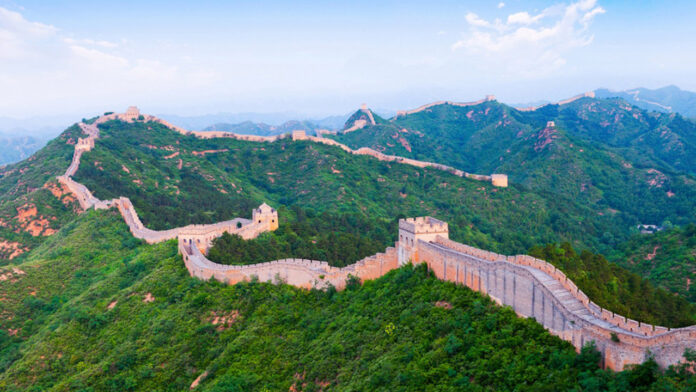Stretching across rugged mountains, vast deserts, and rolling plains, the Great Wall of China stands as a testament to human ingenuity, endurance, and ambition. In this article, we embark on a journey through time to explore the rich history and fascinating facts surrounding this iconic structure, from its origins in ancient China to its enduring legacy as one of the world’s most iconic landmarks.
Origins and Construction
Ancient Beginnings: The Great Wall of China has its origins in the Warring States period (476–221 BCE) when various Chinese states built walls and fortifications to defend against invasions from northern nomadic tribes. These early walls laid the foundation for the monumental structure that would later become known as the Great Wall.
Ming Dynasty Expansion: The most well-known sections of the Great Wall were constructed during the Ming Dynasty (1368–1644 CE) to fortify the northern border and protect against Mongol incursions. Ming emperors ordered the construction of vast fortifications, watchtowers, and beacon towers, creating the iconic image of the Great Wall that we recognize today.
Structure and Design
Impressive Length: The Great Wall of China spans approximately 13,170 miles (21,196 kilometers) across northern China, making it one of the longest man-made structures in the world. It traverses rugged terrain, including mountains, deserts, and grasslands, demonstrating the engineering prowess of its builders.
Architectural Features: The Great Wall consists of various components, including walls, watchtowers, and fortresses, connected by winding pathways and steep staircases. The walls were constructed using a variety of materials, including rammed earth, brick, stone, and wood, depending on local resources and terrain.
Historical Significance
Defensive Barrier: The primary purpose of the Great Wall was to defend China’s northern border against invasions from nomadic tribes such as the Mongols, Turks, and Xiongnu. Its strategic location and imposing presence served as a formidable deterrent to potential invaders.
Symbol of National Identity: Over the centuries, the Great Wall has come to symbolize China’s resilience, unity, and cultural identity. It has been immortalized in literature, art, and folklore as a symbol of strength and endurance, reflecting the spirit of the Chinese people.
UNESCO World Heritage Site
Global Recognition: In 1987, the Great Wall of China was designated a UNESCO World Heritage Site in recognition of its historical significance, architectural brilliance, and cultural value. It is considered one of the most important cultural landmarks in the world.
Conservation Challenges: Despite its status as a UNESCO site, the Great Wall faces numerous conservation challenges, including erosion, vandalism, and encroachment by urban development. Efforts are underway to preserve and protect this iconic monument for future generations.
Tourist Attractions and Cultural Impact
Popular Destination: The Great Wall of China attracts millions of visitors from around the world each year, drawn by its grandeur, history, and panoramic views. Visitors can explore various sections of the wall, from well-preserved segments to remote and rugged stretches.
Economic Benefits: Tourism related to the Great Wall generates significant revenue for local communities, supporting livelihoods and economic development in rural areas. The wall has become a symbol of national pride and a source of cultural enrichment for visitors and residents alike.
Myths and Legends
Mythical Creatures: According to folklore, the Great Wall of China is inhabited by mythical creatures such as dragons and spirits, which guard its secrets and protect it from harm. These legends add to the mystique and allure of the ancient structure.
Labor and Sacrifice: The construction of the Great Wall involved the labor of millions of workers over several centuries, many of whom were conscripted peasants, prisoners, and soldiers. The wall stands as a testament to their sacrifice and dedication to defending their homeland.
Conclusion: Honoring the Legacy of the Great Wall
In conclusion, the Great Wall of China is more than just a physical barrier—it is a symbol of human resilience, determination, and cultural heritage. From its ancient origins as a defensive fortification to its status as a UNESCO World Heritage Site and global tourist attraction, the Great Wall continues to captivate the imagination and inspire awe. As we marvel at its grandeur and explore its rich history, we honor the enduring legacy of this iconic monument and the generations of people who contributed to its construction and preservation/

